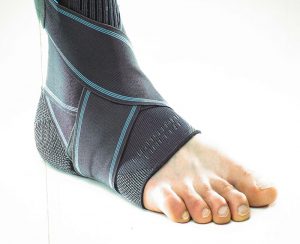True friends look beneath our outward persona to know—and love—who we really are. What we present to the world is one part but it’s our thoughts, feelings, and emotions that link us to others. In medicine, too, there are many layers. And sometimes getting to the root of an issue means delving below the surface. At Longview’s Pacific Surgical Center (PSC), this can be done via outpatient arthroscopy of the affected areas.
Arthroscopy uses a small camera to look inside your joints. At PSC they provide arthroscopic services on knees, shoulders, wrists, and ankles. The American Academy of Orthopedic Surgeons (AAOS) explains that “Arthroscopy is a surgical procedure that orthopedic surgeons use to visualize, diagnose, and treat problems inside a joint. The word arthroscopy comes from two Greek words, ‘arthro’ (joint) and ‘skopein’ (to look).”
 The process is fairly simple. AAOS doctors describe how “In an arthroscopic examination, an orthopedic surgeon makes a small incision in the patient’s skin and then inserts pencil-sized instruments that contain a small lens and lighting system to magnify and illuminate the structures inside the joint. Light is transmitted through fiber optics to the end of the arthroscope that is inserted into the joint. By attaching the arthroscope to a miniature television camera, the surgeon is able to see the interior of the joint through this very small incision rather than a large incision needed for surgery.”
The process is fairly simple. AAOS doctors describe how “In an arthroscopic examination, an orthopedic surgeon makes a small incision in the patient’s skin and then inserts pencil-sized instruments that contain a small lens and lighting system to magnify and illuminate the structures inside the joint. Light is transmitted through fiber optics to the end of the arthroscope that is inserted into the joint. By attaching the arthroscope to a miniature television camera, the surgeon is able to see the interior of the joint through this very small incision rather than a large incision needed for surgery.”
Arthroscopy isn’t the first step in determining the problem. “Diagnosing joint injuries and disease begins with a thorough medical history, physical examination, and usually X-rays. Additional tests such as magnetic resonance imaging (MRI) or computed tomography (CT) also scan may be needed,” says the AAOS. But if it’s necessary, it can help see inflammation levels and signs of injury like tears to tendons, carpal tunnel syndrome, arthritis, and rotator cuff issues.
If surgery is needed, PSC doctors can often use the same small incision to repair any damage. This minimally invasive process means less downtime and faster return to your daily life. For example, in your knee “The meniscus is a c-shaped pad of cartilage in the knee that acts as a shock absorber,” say doctors at Johns Hopkins. “Each knee has two menisci. Meniscus tears are common knee injuries. Knee arthroscopy is often used to treat meniscal tears.” This is done by trimming the torn meniscus with small scissors through the initial incision point.
At PSC, they know that medical sticker shock is a very real barrier to treatment. Many people avoid even diagnostic treatment for fear of what it—and the eventual fix—will cost. But PSC’s commitment to transparent pricing means they’ll work to explain all costs in advance. Their billing staff “Will gather information regarding your insurance and determine what portion of our facility fee the provider will pay and what portion will be your responsibility. Our facility charge covers pre-operative evaluation, equipment, personnel, most supplies and medications, and use of the operating and recovery rooms.”
 The biggest upside to arthroscopic examination and surgery is the rapid recovery time. But don’t let external healing fool you into doing too much, too soon. AAOS doctors warn that “Although the puncture wounds are small and pain in the joint that underwent arthroscopy is minimal, it takes several weeks for the joint to maximally recover…It is not unusual for patients to go back to work or school or resume daily activities within a few days. Athletes and others who are in good physical condition may in some cases return to athletic activities within a few weeks. Remember, though, that people who have arthroscopy can have many different diagnoses and preexisting conditions, so each patient’s arthroscopic surgery is unique to that person. Recovery time will reflect that individuality.”
The biggest upside to arthroscopic examination and surgery is the rapid recovery time. But don’t let external healing fool you into doing too much, too soon. AAOS doctors warn that “Although the puncture wounds are small and pain in the joint that underwent arthroscopy is minimal, it takes several weeks for the joint to maximally recover…It is not unusual for patients to go back to work or school or resume daily activities within a few days. Athletes and others who are in good physical condition may in some cases return to athletic activities within a few weeks. Remember, though, that people who have arthroscopy can have many different diagnoses and preexisting conditions, so each patient’s arthroscopic surgery is unique to that person. Recovery time will reflect that individuality.”
Sometimes joint pain has a simple cause. Aging, over-use, strenuous exercise, and falls happen to us all. If a little R.I.C.E. (rest, ice, compression, and elevation) doesn’t do the trick, there may be something going on beneath the surface. Thanks to arthroscopic advancements, finding the cause can be just as easy as fixing it.
Our joints are crucial to ease of mobility and pain-free daily life. If yours just aren’t bouncing back like they used to, talk to your primary care provider and then schedule a visit to Pacific Surgical Center. They accept most insurance and Medicare, but many people find their cash prices are cheaper than the patient’s responsibility after deductible and coinsurance. Then read about their board-certified physicians and book your appointment online or by calling 360-442-7900.



